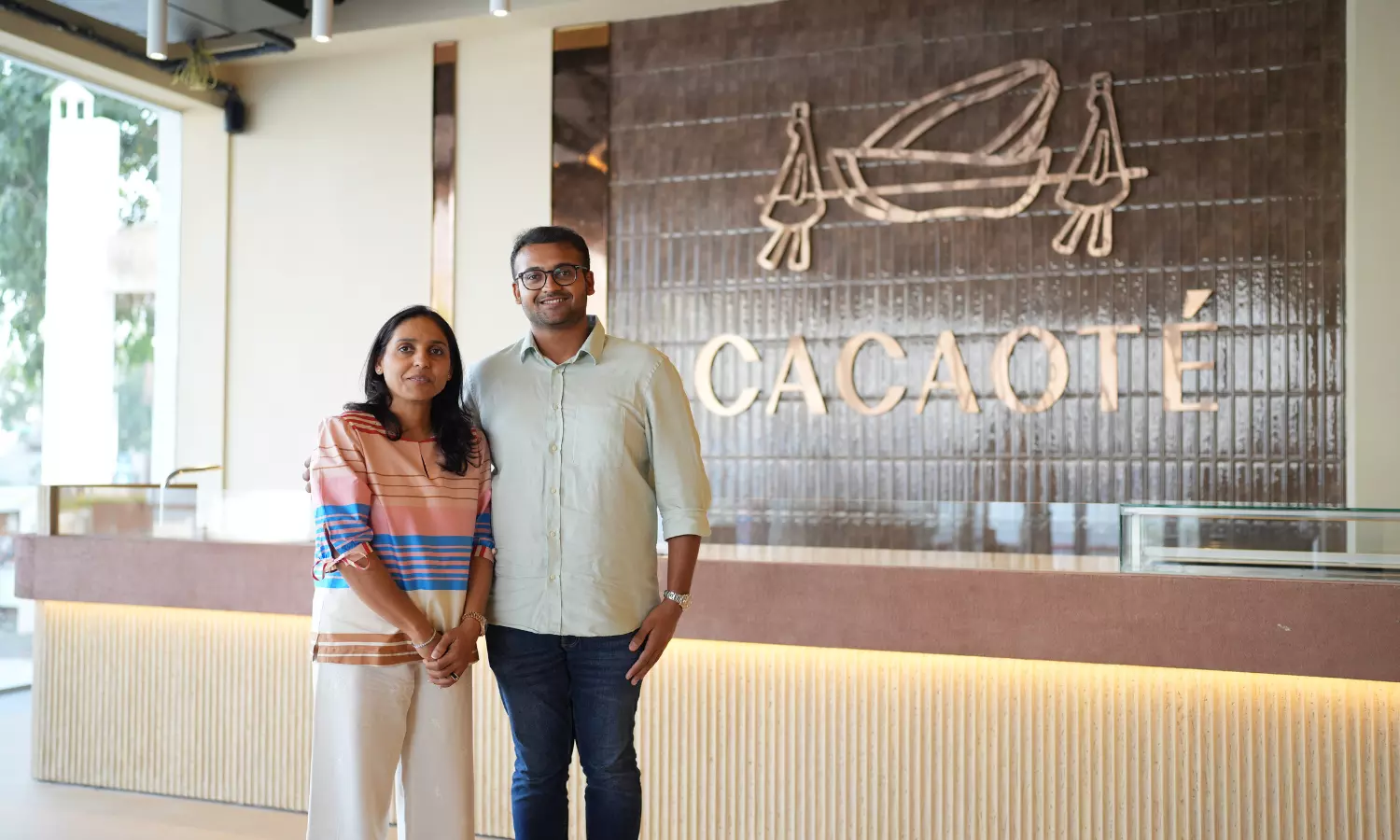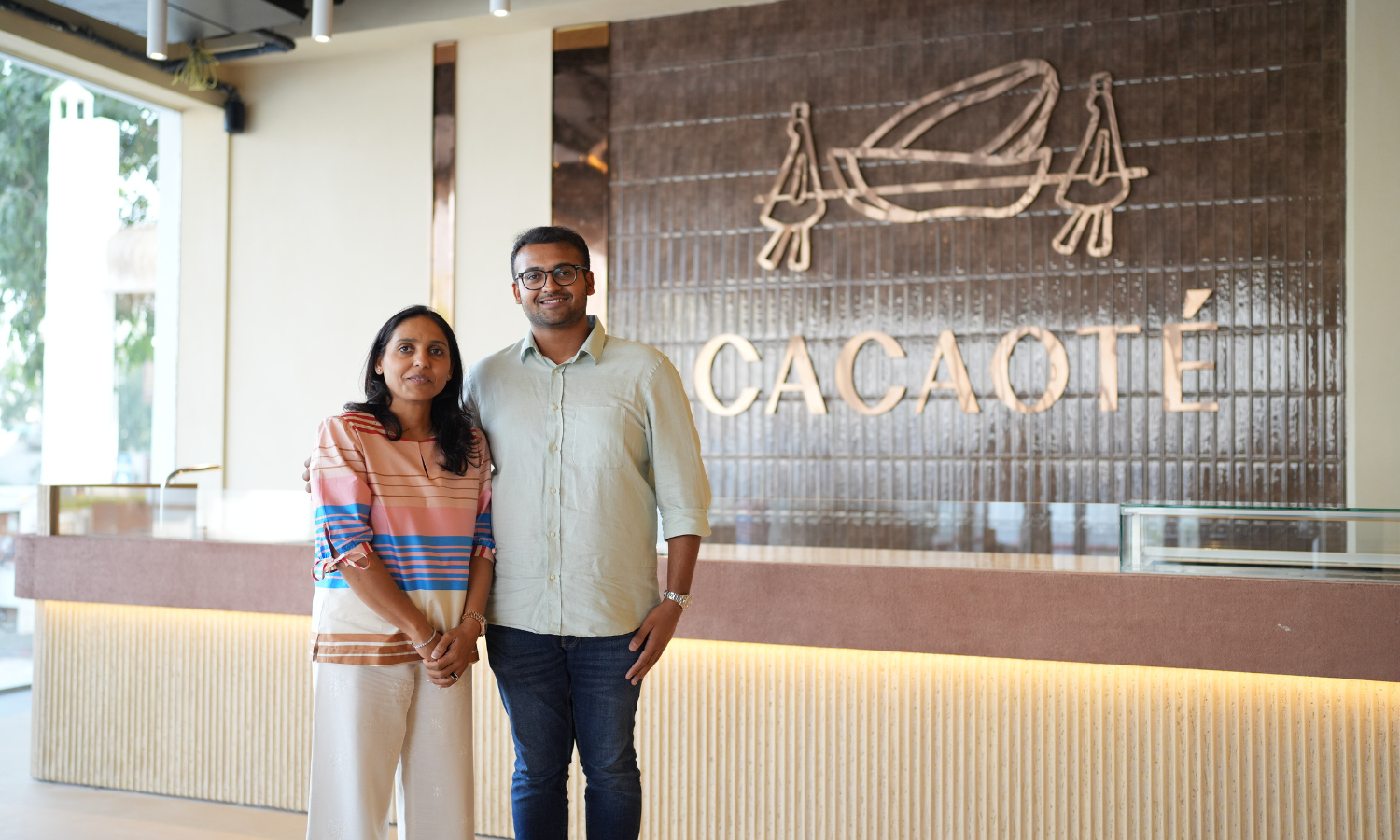
Discover the story of Cacaoté Pattiserie Brasserie, a luxury chocolate boutique in Ahmedabad, founded by Vraj and Rita Patel.
How did you get so passionate about chocolate?
What sets this dining space apart from the other places?
How did you convince Executive Chef Jonathan Gallet with Michelin star expertise to work for Cacaoté?
How do you plan to measure the return on investment (ROI) for Cacaoté?
We have a separate catering business, and we are hoping Cacaoté will be a part of many weddings. We cater to VIP clients in Ahmedabad, and we will leverage our catering company to pitch Cacaoté products. We already bagged a catering gig in Jaipur for a big wedding, where we will have a chocolate bar. We are planning to go online by February, making Cacaoté products available all over India. Eventually, we will open smaller outlets in select locations across India.
What quality control measures do you have in place?
Our Executive Chef Jonathan Gallet, who has spent most of his 25-year career working in Michelin-starred restaurants, is very particular about quality control. We check the quality of every ingredient, and every product that goes out of our kitchen. We are very hands-on, and everyone in our team is passionate about the project.
We source our ingredients from Europe through different vendors like Delta, Chef Middle East, and Eurofoods. We used to source ingredients ourselves, but now we focus on making the products, and our vendors handle the sourcing.
How do you ensure quality control during delivery?
We have a temperature-controlled car, and our drivers are trained to handle the products with care. We have also introduced cold chain methods to our vendors, so they understand the importance of temperature control during delivery.
Are you introducing any sustainable practices in your business?
Yes, we plan to start a solar farm in the future. Since our boutique restaurant consumes a lot of electricity, we want to give back to the community through solar power. We will connect it to the grid and supply excess energy back. It’s a future project, but it’s on our mind since we know we have a large power consumption.
We are trying to break the trend in India where people usually go for ice cream after dinner. We want to introduce Indians to the idea of having cakes, chocolates, and pastries as desserts. Our head chef is a perfectionist and ensures that every pastry is made to the highest standard. We are planning to expand our staff once we open and see how the market responds.
The outside architecture was designed by an Australian designer, while the interiors were done by a London-based designer. I wanted a luxury yet minimalistic feel, with subtle hints of rose gold. Our packaging and design elements, like the chocolate-colored tiles imported from Spain, all tie in with the chocolate theme. The design concept was created by LEQB, and executed by a local company. We focused on incorporating elements like flowing chocolate and cocoa pods to create a unique experience.
How long did it take to set up Cacaoté?
It took us almost a year to research and conceptualise the project. Then, it took another 1.5 to 2 years to construct everything. We had to import machines from France and work with vendors who didn’t have experience with these machines. Our chef, who has worked in luxury chains, was amazed by the kitchen space and machines. We were able to offer him the freedom to try new flavours and work with Indian ingredients, which was a major draw for him.
Rita, tell me about the kind of spices and ingredients you are using to make Cacaoté chocolates unique.
Is Cacaoté going to be all vegetarian?
Yes, it’s all vegetarian. That’s also a first. Everything is vegetarian, and we are excited for you to try our Petit Gâteau and other offerings after the launch.
Are you planning to introduce craft chocolates in the future?
We are always thinking of new ideas, but we need to focus on one thing at a time. For now, we are happy with what we have. Step two will be to develop more products and expand our range.
